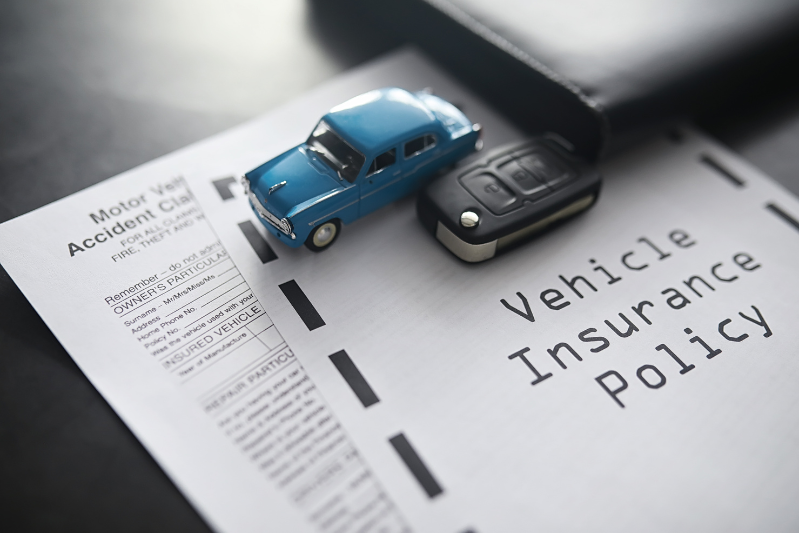Car insurance is more than just a legal requirement—it’s a safety net that protects you, your family, and your finances in the event of an accident or unforeseen mishap. Whether you’re a seasoned driver or new to the road, understanding car insurance is essential for making informed decisions and ensuring peace of mind. In this comprehensive guide, we’ll explore everything from the basics and history of car insurance to modern trends and tips for saving money. Read on to learn why car insurance matters and how you can get the best coverage for your needs.
Introduction: Why Car Insurance Matters
Imagine being involved in an accident that leaves you with thousands of dollars in repair costs and medical bills. Now, imagine facing the same situation without the protection of car insurance. Scary, isn’t it? In fact, according to industry data, nearly every driver faces unexpected challenges on the road, and car insurance is designed to help shoulder that burden. Not only is it legally required in most places, but it also provides critical financial protection and peace of mind.
In this blog post, we’ll cover:
- What car insurance is and why it’s indispensable
- A brief history and evolution of car insurance
- The different types of car insurance policies available
- How insurance premiums are calculated
- Common misconceptions and frequently asked questions
- Modern trends shaping the car insurance industry
- Tips and strategies to reduce your premiums
By the end of this post, you’ll have a clear, in-depth understanding of car insurance—everything you need to know to navigate the world of auto protection confidently.
What Is Car Insurance?
At its core, car insurance is a contract between you (the policyholder) and an insurance company. In exchange for paying regular premiums, the insurer agrees to cover certain financial losses resulting from vehicle-related incidents. These incidents can include collisions, theft, vandalism, natural disasters, and even liability claims if you cause injury or damage to someone else’s property.
Key Characteristics of Car Insurance
- Financial Protection: Covers repair or replacement costs for your vehicle and medical expenses if injuries occur.
- Liability Coverage: Pays for damages and injuries you’re legally responsible for if you cause an accident.
- Additional Coverages: May include collision, comprehensive, uninsured/underinsured motorist coverage, gap insurance, and roadside assistance.
- Legal Requirement: In most jurisdictions, drivers must have at least a minimum level of car insurance to legally operate a vehicle.
Understanding these elements is crucial for making an informed decision about the coverage you need. Whether you opt for basic liability or a more comprehensive package, your car insurance policy serves as a financial safeguard against the unpredictability of the road.
A Brief History of Car Insurance
Car insurance has evolved dramatically since the advent of the automobile. The roots of car insurance date back to the late 19th century when the first motor vehicles began to appear on public roads.
The Early Days
- The Birth of Auto Insurance: In 1898, the Travelers Insurance Company sold what is considered the first-ever auto insurance policy. At that time, cars were a novel technology, and the idea of insuring them was groundbreaking.
- Rising Risks and Government Intervention: As automobiles became more common and accidents increased, the need for a system to protect drivers and victims became evident. Early on, car owners were expected to bear the full cost of accidents, leading to significant financial hardships for many.
Government Mandates and the Evolution of Coverage
- Mandatory Insurance Laws: The increasing frequency of accidents led governments to step in. For example, in 1925, Connecticut passed one of the first financial responsibility laws in the United States, and by 1930, the United Kingdom introduced compulsory car insurance with the Road Traffic Act.
- Standardization of Policies: Over the decades, as car ownership surged and the types of vehicles diversified, insurance policies became more standardized. Insurers began offering a range of coverage options—from liability-only policies to comprehensive plans that cover almost every eventuality.
- Modern Innovations: Today, car insurance is a sophisticated industry that leverages advanced data analytics, telematics, and digital platforms to offer personalized rates and policies. This evolution reflects a broader shift toward more data-driven and customer-centric services in the financial world.
This historical journey underscores how car insurance has transformed from a novel idea to an essential component of modern driving, continually adapting to meet the changing needs of society.
Types of Car Insurance Policies
Car insurance isn’t one-size-fits-all. There are various policy types designed to meet different needs, budgets, and levels of risk. Here are the primary types of car insurance coverage:
1. Liability Insurance
Liability insurance is the cornerstone of any car insurance policy and is legally required in most jurisdictions.
- Bodily Injury Liability: Covers medical expenses, lost wages, and legal fees if you injure someone in an accident.
- Property Damage Liability: Pays for damage you cause to someone else’s vehicle or property.
2. Collision Coverage
This coverage pays for repairs to your vehicle if it’s damaged in a collision, regardless of who was at fault. It is especially important if you have a newer or more expensive car.
3. Comprehensive Coverage
Comprehensive insurance covers non-collision incidents such as:
- Theft or vandalism
- Natural disasters (hail, floods, hurricanes)
- Falling objects or animal collisions
4. Uninsured/Underinsured Motorist Coverage
This protects you if you’re involved in an accident where the at-fault driver doesn’t have adequate insurance.
- Uninsured Motorist: For drivers with no insurance.
- Underinsured Motorist: When the at-fault driver’s insurance is insufficient to cover the damages.
5. Gap Insurance
If you’re financing or leasing your car, gap insurance covers the difference between your car’s actual cash value and the amount you owe on your loan if your car is totaled.
6. Roadside Assistance and Rental Reimbursement
Some policies offer additional services such as:
- Roadside Assistance: Help with towing, battery jump-starts, or tire changes.
- Rental Reimbursement: Covers the cost of a rental car while your vehicle is being repaired.
Each type of coverage plays a role in protecting you from different risks. For instance, if you’re concerned about theft or natural disasters, comprehensive coverage is essential. If you simply want to meet legal requirements, liability insurance might suffice—but it leaves you vulnerable in an accident where you’re at fault.
How Are Car Insurance Premiums Calculated?
One of the most common questions among drivers is, “Why do my premiums cost so much?” The answer lies in the complex calculation of risk by insurers. Here are the primary factors that influence your car insurance premiums:
Driver-Specific Factors
- Age and Experience: Younger and less experienced drivers typically pay higher premiums because statistically, they are more likely to be involved in accidents.
- Driving Record: A history of traffic violations, accidents, or claims can result in higher rates.
- Credit Score: Many insurers use your credit history as an indicator of risk. A better credit score can often translate into lower premiums.
Vehicle-Specific Factors
- Make and Model: High-performance or luxury vehicles are more expensive to insure due to higher repair costs and theft rates.
- Vehicle Age: Newer cars may cost more to insure because of their higher value, while older cars might have lower premiums but could lack modern safety features.
- Safety Features: Vehicles equipped with advanced safety features like airbags, anti-lock brakes, and collision avoidance systems can qualify for discounts.
Location
- Urban vs. Rural: Urban areas, with higher traffic and theft rates, generally lead to higher premiums compared to rural areas.
- Regional Regulations: State laws and local market conditions can also affect the cost of car insurance.
Coverage Selections
- Deductible Amount: Choosing a higher deductible can lower your premium, but it means paying more out-of-pocket in the event of a claim.
- Coverage Limits: Opting for higher coverage limits increases your premium, but it provides greater financial protection.
Usage and Behavior
- Annual Mileage: The more you drive, the higher the risk of accidents, and therefore, the higher your premium.
- Telematics and Usage-Based Insurance: Some insurers offer discounts for drivers who agree to have their driving behavior monitored, rewarding safe driving habits.
Understanding these factors helps explain why two drivers with similar cars might pay very different premiums. Insurers analyze historical data and use complex algorithms to predict the likelihood of future claims, adjusting your premium accordingly.
Understanding Your Car Insurance Policy
It’s essential to know exactly what your car insurance policy covers—and what it doesn’t. Many drivers assume that a “full coverage” policy means every possible scenario is covered, but that’s not always the case.
What’s Covered?
- Accident-Related Damages: Collision and comprehensive cover damage to your vehicle.
- Third-Party Liabilities: Liability coverage takes care of legal and medical costs if you’re at fault in an accident.
- Theft and Vandalism: Comprehensive insurance protects against loss or damage from theft or vandalism.
- Additional Services: Optional add-ons like roadside assistance and rental reimbursement can be crucial during unexpected breakdowns or accidents.
What’s Not Covered?
- Routine Maintenance and Wear & Tear: Regular upkeep, mechanical breakdowns not related to accidents, and depreciation are typically not covered.
- Unapproved Modifications: Failing to declare modifications (such as a custom paint job or performance upgrades) may invalidate your policy.
- Intentional Damage: Damage caused intentionally or due to reckless behavior is not covered.
- Gaps in Coverage: If you drop certain coverages (e.g., collision) to save money, you might be left unprotected in specific scenarios.
Before you sign on the dotted line, always read your policy’s fine print and ask your insurer about any ambiguities. This understanding will empower you to make adjustments to your coverage as your needs change.
Common Misconceptions and FAQs About Car Insurance
Despite its importance, many misconceptions about car insurance persist. Clearing up these myths can help you make better decisions and avoid costly mistakes.
Myth 1: Red Cars Cost More to Insure
One of the most enduring myths is that red cars are more expensive to insure. In reality, the color of your vehicle has no impact on your premium. What matters are factors such as the car’s make, model, safety features, and repair costs.
Fact: Insurance companies base their rates on risk factors, not aesthetics.
Myth 2: Full Coverage Means Everything Is Covered
Many drivers mistakenly believe that a full coverage policy protects against every possible scenario. However, full coverage is actually a combination of liability, collision, and comprehensive coverages—and it has its limits.
Fact: Even full coverage policies exclude routine maintenance, intentional damage, and certain modifications.
Myth 3: Your Driving Record Is All That Matters
While your driving record is a crucial factor, insurers also consider other variables such as credit score, location, and even annual mileage.
Fact: A holistic view of your driving habits and personal information is used to calculate your premium.
Myth 4: Shopping for Car Insurance Every Year Is Unnecessary
Some drivers believe that switching insurance providers too frequently will cost them loyalty discounts. However, the insurance market is competitive, and shopping around can often save you money without negatively affecting your coverage history.
Fact: Regularly comparing quotes can help you find better rates as your circumstances and market conditions change.
FAQ: What Is the Best Type of Car Insurance for Me?
The answer depends on several factors including your vehicle’s value, your driving habits, and your financial situation. For older cars, liability and comprehensive coverage might suffice. For newer or financed vehicles, collision and gap insurance could be essential.
FAQ: How Can I Lower My Car Insurance Premium?
Consider:
- Increasing your deductible
- Bundling your car insurance with other policies (e.g., home or renters insurance)
- Installing safety devices in your vehicle
- Reducing annual mileage
- Using telematics programs that reward safe driving
Clearing up these common misconceptions empowers you to ask the right questions and choose a policy that truly meets your needs.
The Benefits and Importance of Car Insurance
Car insurance isn’t just a legal formality—it plays a vital role in protecting your financial future and ensuring you can recover from unexpected incidents.
Financial Protection
- Accident Costs: Without insurance, you could face exorbitant repair bills, medical expenses, and legal fees.
- Asset Protection: Car insurance safeguards your personal assets by covering liabilities that might otherwise lead to lawsuits.
- Peace of Mind: Knowing you’re covered in the event of an accident allows you to drive with confidence.
Legal Compliance
- Mandatory Requirement: In most places, driving without car insurance is illegal and can result in fines, license suspension, or even jail time.
- Protection for Third Parties: Insurance ensures that if you’re at fault, the injured parties are compensated, reducing the financial burden on both you and society.
Societal Benefits
- Risk Pooling: Car insurance spreads the risk across a large group of people, making it manageable for everyone.
- Economic Stability: By mitigating the financial impact of accidents, car insurance helps maintain economic stability for individuals and communities.
- Encouragement of Safer Driving: Many insurers offer discounts and incentives for safe driving, which can lead to overall improved road safety.
Real-World Impact
Consider the case of a young driver who, after a minor accident, faced tens of thousands of dollars in repair costs. With comprehensive car insurance, the financial hit was absorbed by the insurer, allowing the driver to avoid crippling debt. Stories like these illustrate the crucial role that car insurance plays in everyday life.
Modern Trends and Innovations in Car Insurance
The car insurance industry is not static—it’s continually evolving to meet new challenges and opportunities. Here are some of the trends shaping the future of car insurance:
1. Telematics and Usage-Based Insurance (UBI)
Telematics involves using technology such as GPS and onboard diagnostics to monitor driving behavior. This data is then used to tailor your insurance premium based on your actual driving habits.
- Pay-As-You-Drive: Premiums can be adjusted based on the miles you drive. This is particularly beneficial for low-mileage drivers.
- Behavior-Based Discounts: Safe drivers can earn significant discounts, encouraging better driving habits.
Recent innovations have integrated these systems with mobile apps, providing real-time feedback and personalized tips to improve your driving and reduce your premium.
2. Online Quoting and Digital Platforms
The digital transformation of the insurance industry has made it easier than ever to compare policies, get instant quotes, and manage your coverage online.
- Comparison Sites: Platforms like Consumer Reports and dedicated insurance aggregators allow you to compare multiple policies in minutes.
- Digital Claims Process: Many insurers now offer a fully digital claims process, reducing the hassle and time involved in getting your claim settled.
3. Artificial Intelligence and Big Data
Insurance companies are leveraging AI to analyze vast amounts of data, which helps in:
- Risk Assessment: More accurate prediction of potential claims based on historical data and current trends.
- Personalized Policies: Tailoring policies to individual needs, ensuring that drivers get the coverage they need without overpaying.
- Fraud Detection: AI systems can identify unusual patterns in claims, reducing the incidence of fraudulent claims and keeping premiums lower for honest customers.
4. The Rise of Peer-to-Peer (P2P) Insurance
P2P insurance models allow groups of drivers to pool their premiums and share claims. This model can lead to lower premiums and foster a sense of community among policyholders.
5. Electric Vehicles (EVs) and Autonomous Cars
As EVs and self-driving cars become more common, insurers are adapting their policies:
- Specialized Coverage for EVs: Insurance for electric vehicles may factor in battery replacement costs and unique repair processes.
- Autonomous Driving Considerations: With self-driving technology, liability may shift from the driver to the manufacturer, leading to new types of insurance products and coverage models.
These trends are not only changing how policies are priced and administered—they’re also shaping the future of mobility and safety on our roads.
Tips and Strategies to Save on Car Insurance
Everyone loves to save money, and with the right approach, you can significantly reduce your car insurance premiums without sacrificing coverage.
Shop Around and Compare
- Use Comparison Websites: Take advantage of online tools that allow you to compare quotes from multiple insurers. This simple step can reveal significant differences in pricing and coverage.
- Renewal Shopping: Don’t assume that sticking with the same insurer is always the best option. Periodically shopping around can uncover better deals.
Adjust Your Deductible
- Higher Deductibles, Lower Premiums: By opting for a higher deductible, you lower the insurer’s risk, which can result in lower premiums. Just be sure you can afford the deductible if a claim is necessary.
- Gap Insurance for Financed Vehicles: If you’re financing a car, consider adding gap insurance to cover the difference between your car’s actual cash value and what you owe.
Bundle Your Policies
- Multi-Policy Discounts: Many insurers offer discounts if you bundle your car insurance with other policies, such as homeowners or renters insurance. This not only simplifies your payments but can also lead to substantial savings.
Improve Your Driving Record
- Defensive Driving Courses: Completing a defensive driving course can help reduce your premium, as insurers reward safe driving habits.
- Telematics Programs: Participating in a telematics program can earn you discounts based on your actual driving performance.
Maintain a Good Credit Score
- Financial Responsibility: A better credit score often translates to lower premiums because it reflects responsible financial behavior.
- Monitor Your Credit: Regularly check your credit report and address any discrepancies or issues.
Optimize Your Vehicle Choice
- Choose a Lower-Risk Vehicle: Cars that are less expensive to repair, have better safety ratings, or are less likely to be stolen often come with lower insurance premiums.
- Avoid Modifications: Unapproved modifications can increase your premiums or even void your policy if not declared properly.
Pay Annually Instead of Monthly
- Avoid Interest Charges: Paying your premium annually can help you avoid the extra costs associated with monthly payments, which insurers often treat as a loan with added interest.
- Use a 0% APR Credit Card: If you need to spread the cost, consider using a credit card with a 0% introductory APR to pay for your annual premium.
Ask About Discounts
- Safe Driver Discounts: Inquire about discounts for a clean driving record, low mileage, or advanced safety features in your vehicle.
- Loyalty and Multi-Car Discounts: If you have more than one car or have been with your insurer for a while, ask about loyalty discounts.
- Professional and Affiliation Discounts: Some insurers offer discounts based on your profession or membership in certain organizations.
Following these strategies can help you secure the best possible rate on your car insurance while ensuring you have the coverage you need.
The Future of Car Insurance: What to Expect
As technology continues to advance and driving habits evolve, the car insurance industry is poised for significant changes. Here are some predictions for the future of car insurance:
Increased Personalization
With the advent of big data and AI, policies will become even more tailored to individual drivers. Expect:
- Dynamic Pricing: Premiums that adjust in real time based on your driving behavior and usage patterns.
- Customized Coverage: Policies that adapt to your lifestyle changes, such as a shift from daily commuting to occasional weekend driving.
Enhanced Digital Experience
The digital transformation of the insurance industry is set to accelerate:
- Fully Digital Claims Processing: Faster, more efficient claims handling through mobile apps and online platforms.
- Virtual Assistance: Chatbots and virtual assistants that help you manage your policy, file claims, and answer questions 24/7.
Integration with Smart Technologies
The rise of connected vehicles and smart infrastructure will reshape car insurance:
- Vehicle-to-Infrastructure Communication: Data from your vehicle can be shared with insurers to provide accurate risk assessments.
- Smart Contract-Based Policies: Blockchain technology may enable transparent, automated policy contracts that are secure and tamper-proof.
Shifts in Liability and Coverage Models
As autonomous vehicles become more prevalent, the traditional model of driver liability may shift:
- Manufacturer Liability: With self-driving cars, liability could move from the driver to the manufacturer, leading to new insurance products.
- Usage-Based and Subscription Models: Insurance may become more like a subscription service, where you pay based on how much you drive rather than a fixed annual premium.
Greater Focus on Sustainability
Environmental concerns are influencing the automotive and insurance industries:
- Green Discounts: Insurers might offer lower premiums for eco-friendly driving habits or for vehicles with low emissions.
- Innovative Products: New coverage options may emerge for electric vehicles (EVs), including specialized repair and battery replacement policies.
These developments are set to transform car insurance, making it more responsive, efficient, and aligned with the needs of modern drivers.
Real-World Examples: How Car Insurance Makes a Difference
To fully appreciate the importance of car insurance, consider these real-world scenarios:
Case Study 1: A Costly Collision Averted
Jane, a young professional, was involved in a minor collision on a busy city street. Thanks to her comprehensive car insurance policy, the damage to her vehicle was fully covered. Without insurance, Jane would have faced out-of-pocket expenses of several thousand dollars. Her policy not only covered the repair costs but also provided liability protection for the other driver involved. This real-life example highlights how car insurance acts as a financial buffer in unexpected situations.
Case Study 2: The Impact of Uninsured Motorists
Tom, an experienced driver, was rear-ended by an uninsured motorist on a rainy day. Because Tom had uninsured motorist coverage, his medical expenses and the repair costs for his vehicle were taken care of by his insurance company. Without this coverage, Tom might have been forced to pay for his injuries and repairs, potentially leading to long-term financial hardship.
Case Study 3: Saving Money with Usage-Based Insurance
Maria, a driver who rarely uses her car, enrolled in a telematics program offered by her insurer. By tracking her low-mileage and safe driving habits, Maria qualified for a significant discount on her premium. This example illustrates how modern trends in car insurance, such as usage-based insurance, can reward safe driving and help lower overall costs.
Frequently Asked Questions (FAQs)
Q1: What is the minimum required car insurance?
A1: In most jurisdictions, the minimum required car insurance is liability coverage, which covers damages or injuries you cause to others. However, the specific limits vary by state or country. It’s important to check your local regulations to ensure you meet the legal requirements.
Q2: How does a deductible affect my premium?
A2: A deductible is the amount you pay out-of-pocket when filing a claim. Choosing a higher deductible generally lowers your premium because you’re assuming more of the risk. However, ensure that you can afford the deductible if an accident occurs.
Q3: What are the benefits of comprehensive coverage?
A3: Comprehensive coverage protects your vehicle from non-collision-related incidents such as theft, vandalism, natural disasters, and animal collisions. It’s especially valuable if you live in an area prone to these risks.
Q4: Can I cancel my policy at any time?
A4: Yes, you can generally cancel your car insurance policy at any time. However, be aware that canceling mid-term might result in cancellation fees or loss of any earned discounts. It’s best to consult your insurer before making any changes.
Q5: How do telematics programs work?
A5: Telematics programs use technology (often via a mobile app or a device installed in your vehicle) to monitor your driving behavior. Insurers analyze data such as speed, braking patterns, and mileage to offer personalized rates, rewarding safe driving with lower premiums.
Q6: What is gap insurance and do I need it?
A6: Gap insurance covers the difference between your car’s actual cash value and the remaining balance on your loan if your car is totaled. It is especially important for new or financed vehicles where depreciation can quickly outpace the loan balance.
These FAQs address some of the most common concerns drivers have about car insurance, helping you to better understand your policy and make informed choices.
Additional Resources and Reputable Sources
For further reading and deeper insights into car insurance, check out these reputable sources:
- Insurance Information Institute (III): Offers detailed guides on auto insurance fundamentals.
- Consumer Reports: Provides comprehensive car insurance buying guides and comparisons.
- Freeway Insurance’s Knowledge Center: Features articles on the evolution of car insurance and modern innovations.
- BrokerLink: Debunks common car insurance myths and offers practical tips.
These resources can provide additional context and data to help you stay informed about changes and trends in the car insurance market.
Conclusion: Secure Your Future with the Right Car Insurance
Car insurance is not just a regulatory formality; it’s a critical financial safety net that protects you against the uncertainties of the road. From covering costly repairs and medical bills to ensuring legal compliance and safeguarding your assets, the benefits of having the right car insurance policy are undeniable.
In this guide, we’ve explored:
- The definition and essential components of car insurance
- A brief history and the evolution of insurance policies
- Various types of coverage—from liability to comprehensive—and their importance
- Key factors that determine your premium and strategies to reduce your costs
- Modern trends, such as telematics and usage-based insurance, that are shaping the future
- Common misconceptions and frequently asked questions that clarify what you’re really paying for
Armed with this knowledge, you’re better equipped to evaluate your needs, compare policies, and choose the coverage that best fits your lifestyle and budget. Whether you’re looking to protect a brand-new vehicle or simply want to save on your monthly premiums, understanding the nuances of car insurance can help you make smarter, more cost-effective decisions.
Call to Action:
Take a moment today to review your current car insurance policy. Are you fully covered for the risks you face on the road? Consider reaching out to a trusted insurance advisor or using an online comparison tool to explore your options. Don’t let misconceptions or outdated information cost you—stay informed, stay protected, and drive with confidence.
If you found this guide helpful, please share it with friends, family, and colleagues who might benefit from a deeper understanding of car insurance. For more articles on related topics, subscribe to our newsletter and join the conversation in the comments below.
Final Thoughts
In an era of rapid technological change and increasing road risks, car insurance remains a cornerstone of responsible driving. It bridges the gap between uncertainty and financial stability, ensuring that even when accidents happen, you don’t have to face the consequences alone. By taking the time to understand your policy and exploring all available options, you can tailor your coverage to your needs, protect your assets, and potentially save hundreds—even thousands—of dollars over the lifetime of your policy.
Remember, car insurance is an investment in your safety and your future. Whether you’re just starting out on the road or looking to upgrade your coverage, the insights shared in this guide will help you navigate the complex world of car insurance with confidence and clarity.
Stay safe on the road, and may your journey be as secure as it is smooth.





